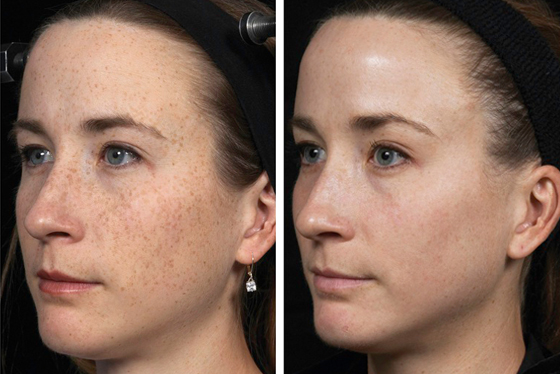Pigmentation Management

Pigmentation Management
Pigmentation is usually found in the central facial areas like moustache, forehead, and cheeks. Increased melanin in the lower layer of the skin and free melanin in the skin gives rise to pigmentation disorders like Chloasma or Melasma. This pigmentation mostly occurs as a brown non-distinct border on the body.
Almost 30 % of the women gets affected by Melasma, however, even men report Melasma sometimes. Pregnancy, hormonal factors, genetic predisposition, and ultraviolet light exposure are some of the main probable causes of Melasma. Skin bleaching agents are recommended to lighten Melasma and get satisfying results.
Post-inflammatory hyperpigmentation is another skin disorder and it is usually secondary to a traumatic incident to the affected area of the skin.
Pigmentation is usually found in the central facial areas like moustache, forehead, and cheeks. Increased melanin in the lower layer of the skin and free melanin in the skin gives rise to pigmentation disorders like Chloasma or Melasma. This pigmentation mostly occurs as a brown non-distinct border on the body.
This skin disorder is more prominent in Asian and dark-skinned people than in fair-skinned people. Such distribution of this skin disorder is unknown, however, factors like hormones, genetic predisposition, ultraviolet light exposure, etc. are known to be the real causes. Melasma is generally not treatable and people having Melasma should avoid exposure to ultraviolet light, drugs containing hormones like conventional hormone replacement therapy agents. Skin bleaching agents are strongly recommended to lighten Melasma and get satisfying results.
Post-inflammatory hyperpigmentation is another skin disorder and it is usually secondary to a traumatic incident to the affected area of the skin, however, the causes of this disease can vary. The underlying mechanism is not known, however, inflammatory mediators such as prostaglandins and leukotrienes may be involved. Exposure to the sun can worsen the condition of the person having post-inflammatory hyperpigmentation.
Many natural topical skin lightening agents like alpha arbutin, kojic acid (derived from berries), alpha-hydroxy acids, and glycolic acid have been found really beneficial in lightening hyperpigmented areas of the skin. These products produce best results when used in conjunction with exfoliation.